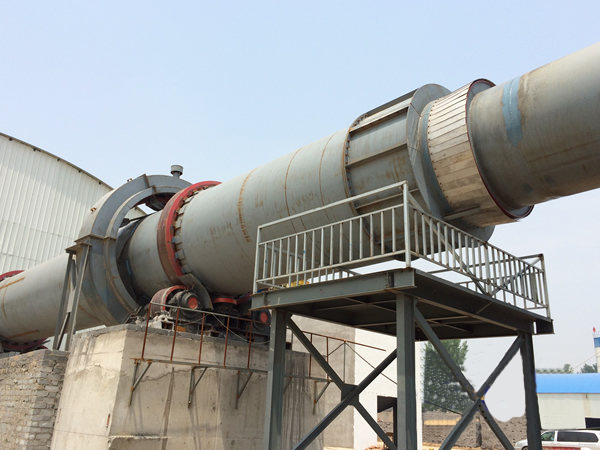 Hi-tech Industrial Development Zone,Kexue Avenue, Zhengzhou, China.
Hi-tech Industrial Development Zone,Kexue Avenue, Zhengzhou, China.-
 sales@sinofote.com
sales@sinofote.com
 Hi-tech Industrial Development Zone,Kexue Avenue, Zhengzhou, China.
Hi-tech Industrial Development Zone,Kexue Avenue, Zhengzhou, China. sales@sinofote.com
sales@sinofote.com

Jan 05, 2023
The host equipment of active lime rotary kiln is in strict accordance with national standards and draws lessons from international manufacturing system to ensure product quality, stable operation, easy maintenance and high production efficiency.
1. The kiln tail is retrofitted with a vertical preheater to make the waste heat of the flue gas directly conduct to limestone, effectively recycling the heat of emissions and reducing the subsequent dust removal workload.
2. The diameter ratio of active lime rotary kiln is reduced from the traditional 20 to 15 or so. The shortening of length not only decreases the surface heat loss of rotary kiln, but also diminishes the floor area of the equipment.

3. The discharging cooling system adopts a vertical cooler instead of the original cooling cylinder. The broiling lime falling from the kiln head is cooled down by exchanging heat with the secondary air, meanwhile, the air absorbs heat and then enters into rotary kiln to support combustion.
4. The cooler and kiln head cover adopt a vertical integration design, with a small area coverage and good sealing.
5. The combustion-supporting wind is divided into primary air and secondary air, respectively supplied by separate fan. The primary air is directly involved in combustion and the secondary air acts as cooling air. The temperature of secondary air can be up to 600 ℃, as the combustion-supporting air to save fuel.
6. Use dedicated combustion system to supply heat for the rotary kiln.
7. The calcining exhaust gas and the blanking point of vertical cooler adopt pulse-jet bag dust collector to remove dust, up to the national emission standard.
8. The regulation, control and alarm system on the production operations of calcination system are intensively controlled by PLC in the master-control room, with image display of each control point and necessary interlocking monitoring.
Copyright© 2025 Henan Fote Heavy Machinery Co., Ltd. All Rights Reserved. Privacy Policy